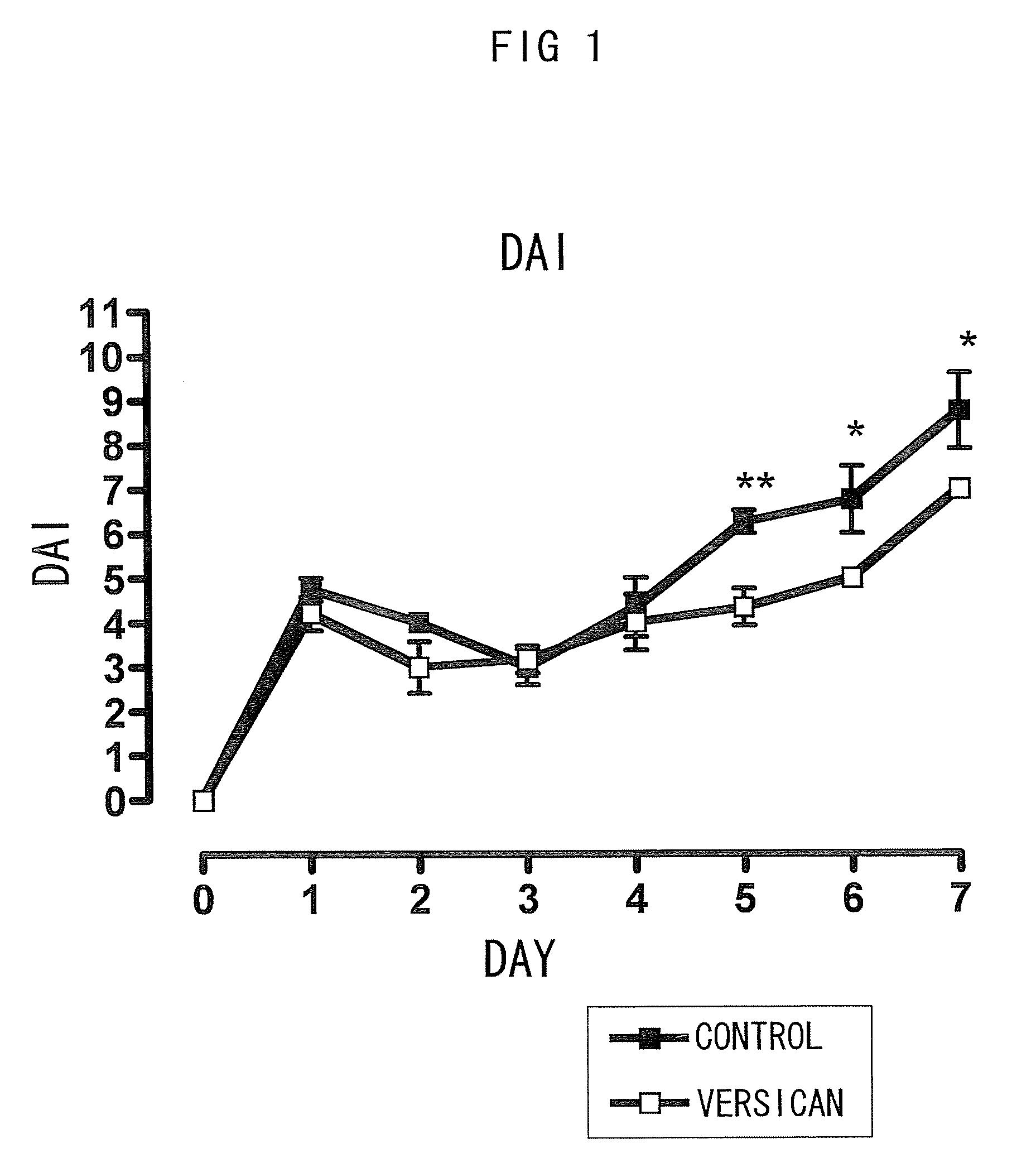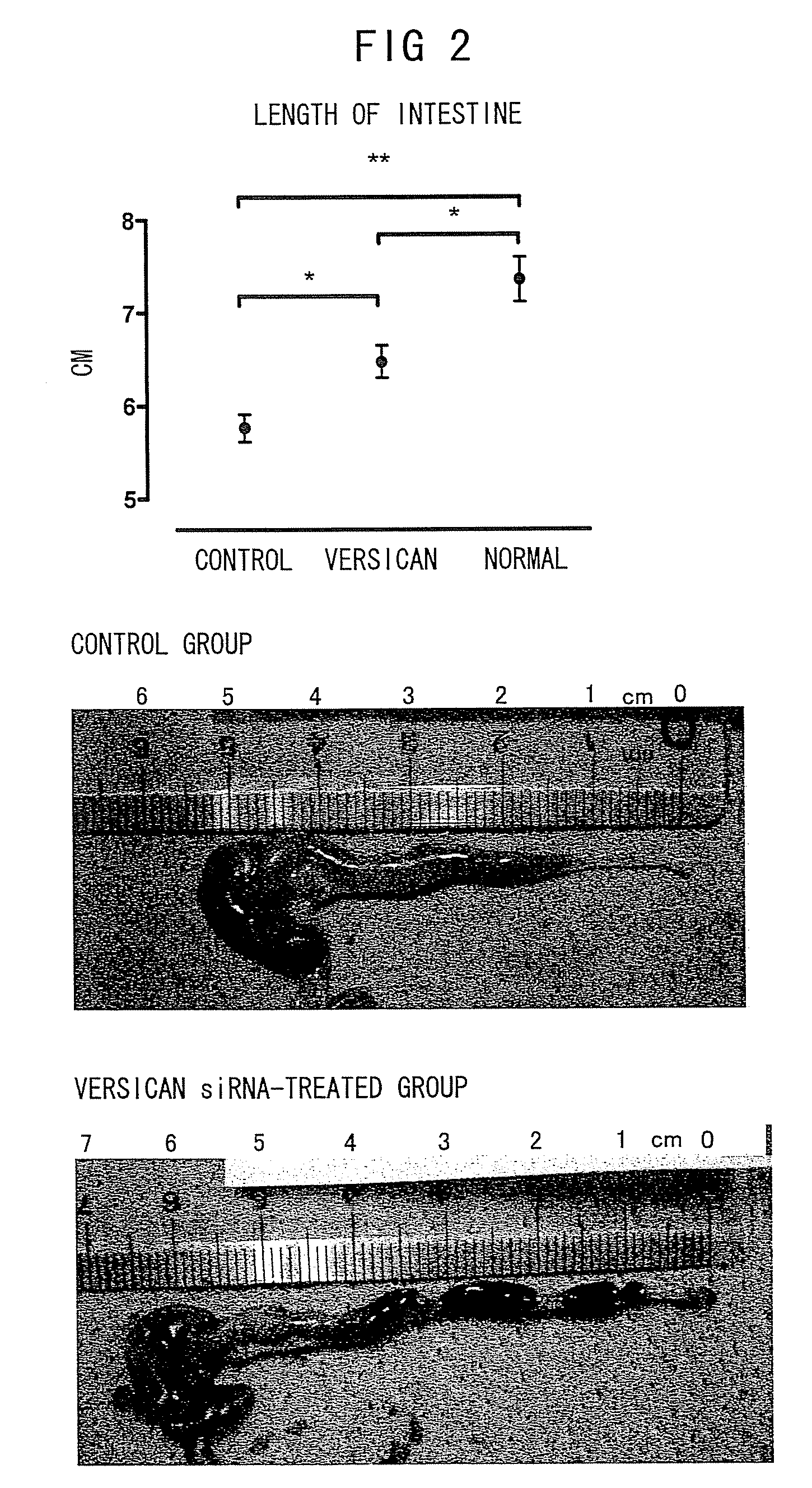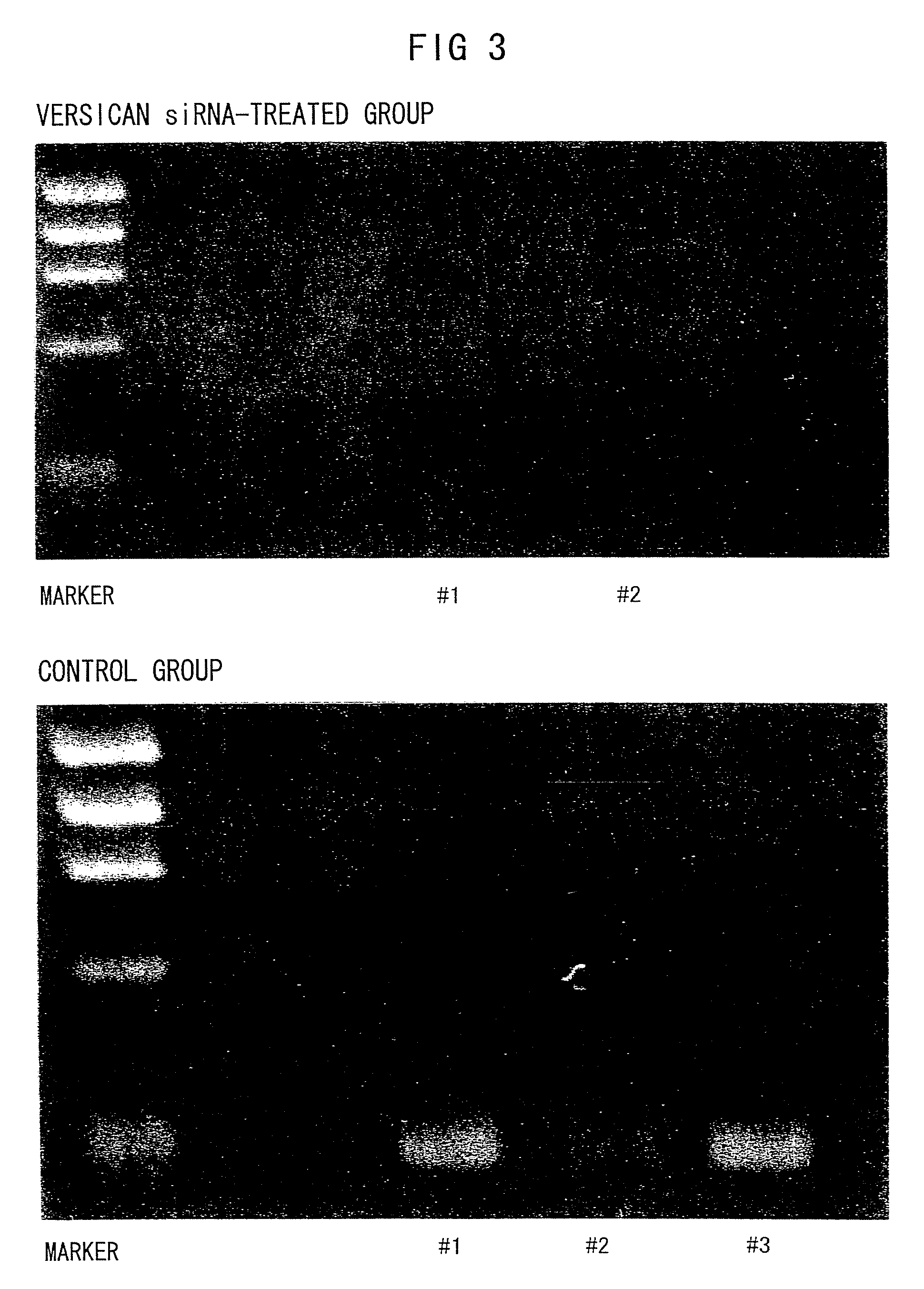Agents for improving inflammatory bowel disease
a technology for inflammatory bowel disease and agents, applied in the direction of instruments, drug compositions, peptide/protein ingredients, etc., can solve the problems of no radical therapeutic method, no radical therapeutic method has been found, and the qol of patients is significantly compromised, etc., to achieve great medical and industrial significance, and suppress the onset of intestinal inflammation
- Summary
- Abstract
- Description
- Claims
- Application Information
AI Technical Summary
Benefits of technology
Problems solved by technology
Method used
Image
Examples
example 1
Therapeutic Effects of Versican siRNA in Ulcerative Colitis Model Mice: Clinical Features
[0178]An ulcerative colitis model was prepared by allowing C57BL / 6JcL mice (female, 6 weeks old; CLEA Japan Inc.) to freely drink high-concentration chlorine water containing 3% dextran sulfate sodium (DSS; Wako Pure Chemical Industries Ltd.) for eight days.
[0179]This DSS-induced ulcerative colitis model has excellent reproducibility, and is thus used widely in experimental systems for mouse ulcerative colitis (Sasaki, N., J Inflamm. 2005, 2, 13). At the same time when the mice were fed with 3% DSS water, 200 μl of a versican siRNA cocktail (5′-ATGAAAGGCATCTTATGGATGTGCTCA-3′ (SEQ ID NO: 67), 5′-ATTACTAACCCATGCACTACATCAA-3′ (SEQ ID NO: 68), 5′-GGCAGCCACCAGCAGGTACACTCTG-3′ (SEQ ID NO: 69), and 5′-CTGCTCAACAGGCTTGTTTGGATAT-3′ (SEQ ID NO: 70), 1 μg / head; GeneWorld Ltd.) or 10×PBS-diluted atelocollagen (Koken Co.) premixed with PBS was injected into the peritoneal cavities of the mice. The groups of ...
example 2
Therapeutic Effects of Versican siRNA in Ulcerative Colitis Model Mice: Macroscopic Features
[0181]The ulcerative colitis model was prepared by allowing C57BL / 6JcL mice (female, 6 weeks old; CLEA Japan Inc.) to freely drink high-concentration chlorine water comprising 3% dextran sulfate sodium (DSS; Wako Pure Chemical Industries Ltd.) for seven days. At the same time when the mice were feed with 3% DSS water, 200 μl of versican siRNA (1 μg / head; GeneWorld Ltd.) or 10×PBS-diluted atelocollagen (Koken Co.) premixed with PBS was injected into the peritoneal cavities of the mice. The groups of mice treated as described above were named the “versican siRNA-treated group” (n=6) and “control group” (n=4). The mice were grown for eight days and receiving 3% DSS water. Then, the mice in each group were sacrificed, and their large intestines were collected and the lengths were determined.
[0182]The result showed that the length of the intestines was significantly conserved in the versican siRNA...
example 3
siRNA Suppression of Versican Expression in Ulcerative Colitis Model Mice
[0183]In this Example, the effect of administering versican siRNA in suppressing versican expression was evaluated by PCR using a typical mouse model of ulcerative colitis, the dextran sulfate sodium-induced ulcerative colitis mouse model.
[0184]The ulcerative colitis model was prepared by allowing C57BL / 6JcL mice (female, 6 weeks old; CLEA Japan Inc.) to freely drink high-concentration chlorine water comprising 3% dextran sulfate sodium (DSS; Wako Pure Chemical Industries Ltd.) for seven days. At the same time when the mice were fed with 3% DSS water, 200 μl of versican siRNA (1 μg / head; GeneWorld Ltd.) or 10×PBS-diluted atelocollagen (Koken Co.) premixed with PBS was injected into the peritoneal cavities of the mice. The groups of mice treated as described above were named the “versican siRNA group” and “control group”. The mice were grown for eight days and receiving 3% DSS water. Then, the mice in each group...
PUM
| Property | Measurement | Unit |
|---|---|---|
| Fraction | aaaaa | aaaaa |
| Fraction | aaaaa | aaaaa |
| Fraction | aaaaa | aaaaa |
Abstract
Description
Claims
Application Information
 Login to View More
Login to View More - R&D
- Intellectual Property
- Life Sciences
- Materials
- Tech Scout
- Unparalleled Data Quality
- Higher Quality Content
- 60% Fewer Hallucinations
Browse by: Latest US Patents, China's latest patents, Technical Efficacy Thesaurus, Application Domain, Technology Topic, Popular Technical Reports.
© 2025 PatSnap. All rights reserved.Legal|Privacy policy|Modern Slavery Act Transparency Statement|Sitemap|About US| Contact US: help@patsnap.com



